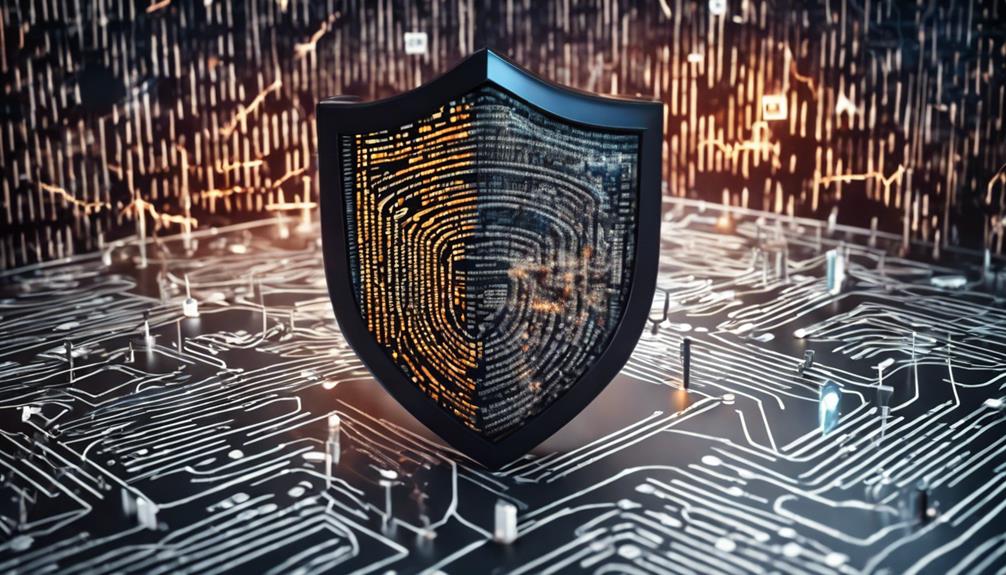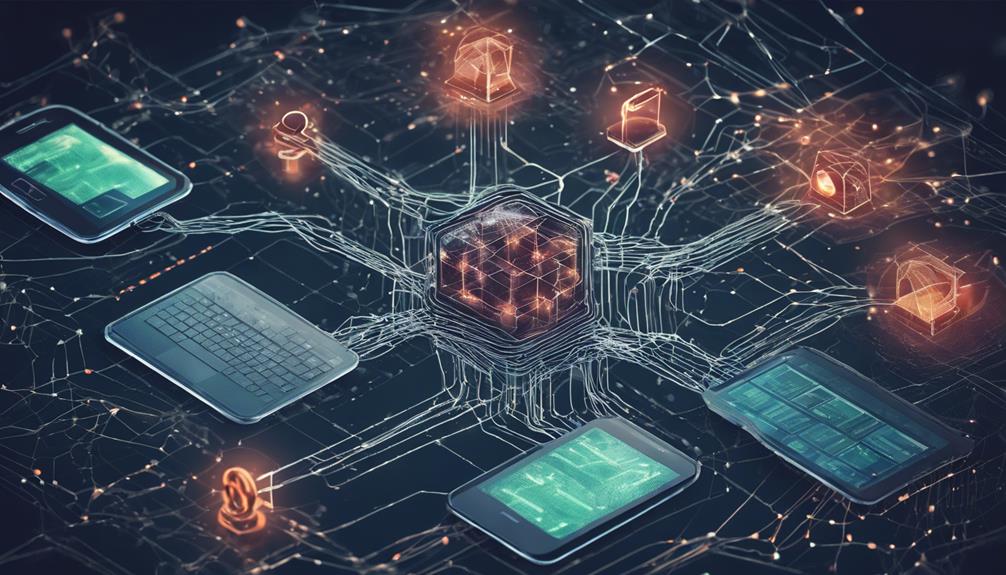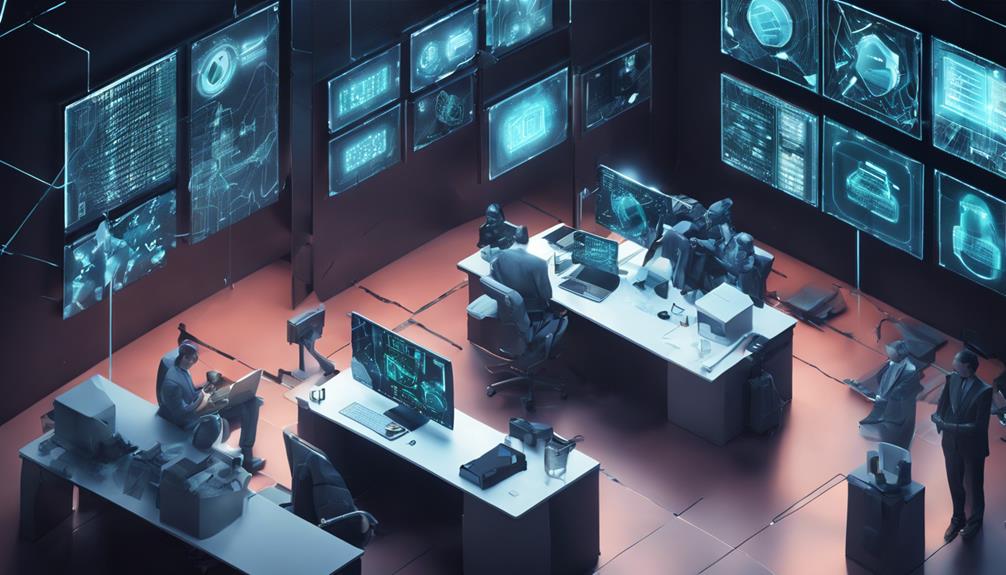In the domain of cybersecurity, AI plays a crucial role. Ransomware attacks affected 72.7% of organizations in 2023. Phishing emails constituted 39.6% of threats, delivering 94% of malware. Financially, data breaches cost the US $5.09 million. As a proactive response, 80% of entities plan to boost security spending. GenAI concerns are rising, with 55% of firms eyeing its adoption. Data privacy with GDPR is essential, showcased by record fines. Cybercrime costs are projected to hit $10.5 trillion by 2025. DDoS attacks saw a spike, emphasizing the need for robust cybersecurity measures. These stats are key to safeguarding digital assets.
Key Takeaways
- 80% of organizations plan to boost information security spending in 2024.
- 55% of organizations intend to adopt Generative AI solutions for cybersecurity.
- 85% attribute cyberattacks to bad actors leveraging Generative AI.
- Record fines exceeding €1.6 billion were imposed by GDPR in 2023.
- 95% of cybersecurity professionals prioritize proactive measures against cyber threats.
Cybersecurity Breach Frequency
The importance of cybersecurity breaches has become a significant concern for organizations worldwide. With cyber incidents on the rise, data breaches, ransomware attacks, and phishing attempts pose substantial threats to businesses.
In 2023, a staggering 72.7% of organizations globally fell victim to a ransomware attack, highlighting the severity of the issue. In addition, phishing, which accounts for 39.6% of all email threats, remains a prevalent method for cybercriminals to infiltrate systems, with 94% of malware being delivered via email.
The impact of these cyber incidents extends beyond data breaches and financial losses. Business interruption, often caused by cybersecurity breaches, is a top concern for 45% of experts. The US, in particular, faced a high cost of $5.09 million due to data breaches in the same year.
It is essential for organizations to prioritize cybersecurity measures to protect sensitive information, prevent business interruption, and mitigate the risks posed by cyber threats.
Ransomware Payment Trends

Given the escalating frequency of cyber incidents, it is important to examine the emerging trends in ransomware payments to combat the growing threat posed by cybercriminals.
Companies are increasingly adopting policies to pay ransoms for stolen data, with 47% having done so in the past year. However, this approach comes with risks, as 45% of ransom payers experienced data exposure despite making payments.
The C-suite is particularly concerned, with 62% ranking ransomware as their top worry. It is essential to note that succumbing to hackers' demands does not guarantee protection from future attacks.
The costs associated with ransomware are also on the rise, projected to reach approximately $265 billion USD annually by 2031. Understanding these trends is crucial for organizations to fortify their cybersecurity defenses and develop robust incident response strategies.
Phishing Attack Statistics

Amid the evolving landscape of cybersecurity threats, phishing attacks continue to pose a significant risk to organizations worldwide. Phishing remains a prevalent method for cybercriminals to infiltrate systems and steal sensitive information.
Here are some key statistics highlighting the impact of phishing attacks:
- 39.6%: This is the proportion of all email threats that are attributed to phishing attempts, emphasizing the widespread use of phishing as a malicious tactic.
- 94%: The overwhelming majority of malware is delivered via email, with phishing serving as a common vehicle for distributing malicious software, underlining the critical need for robust email security measures.
- 62%: Spear phishing attachments were utilized in a significant portion of phishing attacks, indicating the sophistication of these targeted campaigns that aim to deceive specific individuals or organizations.
These numbers underscore the urgency for organizations to implement effective cybersecurity measures, including multi-factor authentication, to mitigate the risks associated with email threats and phishing attacks.
Impact of AI on Security Investments
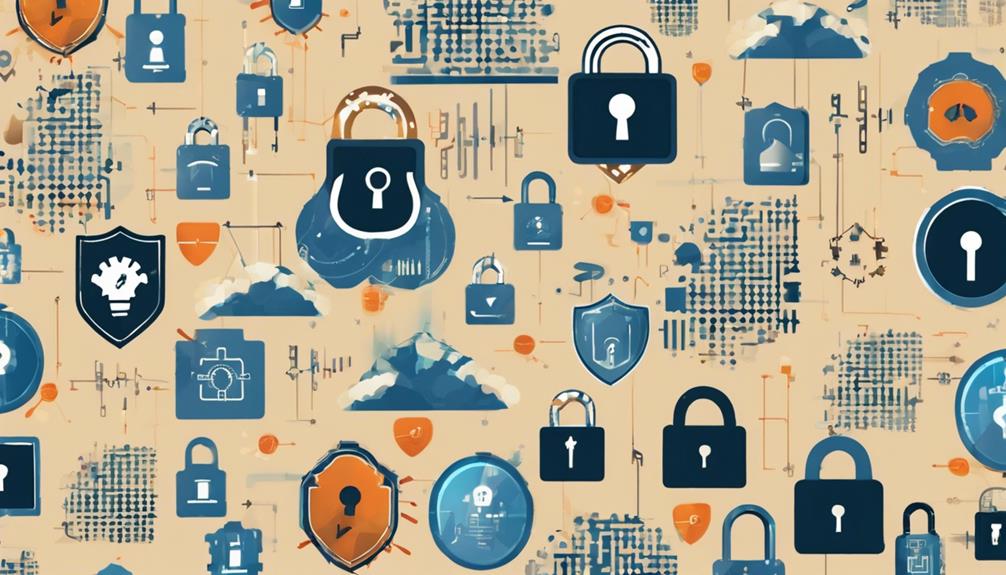
A significant shift in security investment strategies is evident as organizations increasingly prioritize leveraging AI technology to enhance cybersecurity measures. In 2024, 80% of organizations are planning to increase spending on information security, reflecting the growing impact of AI on security investments.
The rise of cyberattacks by groups like Lockbit 3.0, Clop, ALPHV/BlackCat, and Paly and Royal ransomware has influenced these decisions, pushing organizations to enhance their security measures. Understanding the dividends that investing in security can yield is essential for entities looking to leverage AI effectively for improved cybersecurity.
By leveraging statistics for strategic decision-making, organizations can allocate resources more efficiently in response to the evolving landscape of cyber threats. It is vital for organizations to enhance their security measures based on statistical insights to mitigate the risks associated with integrating AI into cybersecurity effectively.
Geopolitical Cybersecurity Trends

Geopolitical cybersecurity trends are increasingly shaping the landscape of global digital security, with significant impacts on organizations worldwide. As we explore this vital area, several key points emerge:
- Asia-Pacific Targeted: The Asia-Pacific region faced the highest number of cyberattacks in 2023, highlighting the region's vulnerability to cyber threats.
- Russia-Ukraine Conflict Impact: A staggering 97% of organizations witnessed a surge in cyber threats following the onset of the Russia-Ukraine conflict in 2022. Additionally, 51% of these organizations updated their cybersecurity policies in response to the heightened risks.
- Supply Chain Vulnerabilities: Geopolitical tensions have exacerbated supply chain vulnerabilities, making them a focal point for cyberattacks. Significantly, 54% of organizations identify third parties and external networks as the most susceptible areas for potential breaches.
These trends underscore the critical need for organizations to fortify their cybersecurity defenses in the face of evolving geopolitical dynamics and emerging threats.
Stay vigilant and proactive to safeguard against the ever-changing cybersecurity landscape.
Industry-Specific Security Insights

The cybersecurity landscape for various industries reveals distinct vulnerabilities and challenges that require tailored security measures. The healthcare industry has witnessed a significant 239% surge in large breaches involving hacking over the past four years, emphasizing the critical need for robust data protection measures in this sector.
Meanwhile, the manufacturing sector faced a staggering 65% of industrial ransomware incidents in 2022, highlighting the pressing issue of cyber extortion campaigns targeting this industry.
Financial services, on the other hand, have been exposing a concerning average of 449,855 sensitive files, with an average time of 233 days to detect and contain breaches, underscoring the importance of swift response mechanisms.
These insights underscore the imperative for organizations in the healthcare, manufacturing, and financial services sectors to prioritize cybersecurity measures to mitigate the risks posed by data breaches, ransomware attacks, and cyber threats.
IoT Vulnerabilities and DDoS Attacks

The increasing number of IoT attacks and the spike in application-layer DDoS incidents underscore the essential need for robust cybersecurity measures.
Understanding the evolving tactics of threat actors and the specific vulnerabilities of IoT devices is vital in mitigating these risks effectively.
Implementing proactive mitigation strategies can help organizations protect their systems and data from the growing threat landscape.
IoT Vulnerability Trends
Highlighting the escalating threat landscape, IoT Vulnerability Trends underscore the pressing concern surrounding IoT vulnerabilities and the surge in DDoS attacks targeting connected devices. The following statistics shed light on the current state of IoT vulnerability trends:
- 10.54 Million IoT Attacks: In December 2022, the staggering number of reported IoT attacks emphasizes the growing vulnerability trends within the IoT space.
- 15% Increase in Application-Layer DDoS Attacks: The reported uptick in application-layer DDoS attacks during Q2 2023 signals a heightened threat level for connected devices, showcasing a worrisome trend in cyberattacks.
- 6,248 DDoS Attacks in 2022: With a significant number of DDoS attacks reported in 2022, it is evident that IoT devices and networks are increasingly becoming targets for malicious actors, necessitating enhanced cybersecurity measures to safeguard against these threats.
These figures highlight the critical need for proactive cybersecurity measures to fortify IoT devices and networks against the growing risks posed by IoT vulnerabilities and DDoS attacks.
Impact of DDoS
In addition to the escalating landscape of cyber threats, the impact of DDoS attacks on IoT vulnerabilities has become a critical concern for organizations worldwide. The rise in IoT attacks, with over 10.54 million reported in December 2022, showcases the vulnerabilities present in Internet of Things devices.
Moreover, the 15% increase in application-layer DDoS attacks in Q2 2023 highlights the growing threat of DDoS attacks. Cyber extortion, particularly targeting large enterprises, not only disrupts operations but also emphasizes the significant financial risks associated with these attacks. The evolving tactics, such as the 15% increase in HTTP DDoS attacks in Q1 2023, demonstrate the adaptability of cybercriminals in exploiting weaknesses.
Organizations need to be vigilant and implement robust cybersecurity measures to mitigate the impact of DDoS attacks on IoT devices, safeguarding their operations and sensitive data from these disruptive cyber threats.
Mitigation Strategies
Addressing IoT vulnerabilities and DDoS attacks requires proactive and thorough mitigation strategies to safeguard organizations against escalating cyber threats. To effectively combat these risks, organizations can implement the following measures:
- Leverage AI in cybersecurity: Utilize machine learning algorithms for continuous threat detection and rapid incident response, enabling real-time protection against evolving IoT vulnerabilities and DDoS attacks.
- Enhance risk management practices: Develop a proactive approach to identify and mitigate potential vulnerabilities within IoT devices and network infrastructure, reducing the likelihood of successful DDoS attacks.
- Implement robust incident response plans: Establish clear protocols and procedures for handling security incidents, ensuring swift and effective responses to mitigate the impact of cyber threats on organizational operations.
AI Integration in Cyber Defense
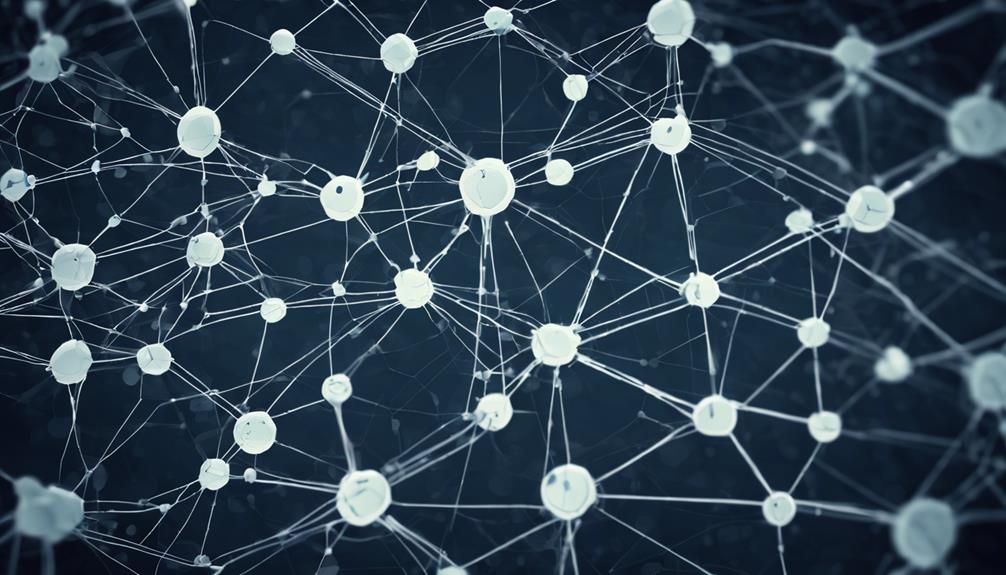
The integration of Artificial Intelligence (AI) in cyber defense strategies is becoming increasingly important as organizations aim to enhance their cybersecurity posture.
With 55% of organizations planning to adopt Generative AI (GenAI) solutions, cybersecurity professionals are recognizing the potential benefits and challenges associated with this technology.
While 85% attribute the rise in cyber attacks to bad actors leveraging Generative AI, 46% express concerns about increased vulnerability.
Privacy concerns, undetectable phishing attacks, and an expected surge in attack volume are among the worries surrounding GenAI integration.
Despite these challenges, the cybersecurity industry is pivoting towards a proactive approach, with 95% of professionals focusing on implementing proactive measures to combat cyber threats effectively.
As organizations navigate the complexities of integrating AI into their defense strategies, staying informed about the latest developments and adapting security measures accordingly is essential in safeguarding against evolving cyber threats posed by malicious actors exploiting AI technology.
GDPR Compliance Figures

Record fines exceeding €1.6 billion were imposed by GDPR in 2023, highlighting the significant impact of non-compliance with data protection regulations. The repercussions of GDPR violations were felt across major tech giants:
- Meta was fined a staggering $1.3 billion for GDPR violations, underscoring the severe consequences of failing to adhere to data protection standards.
- TikTok faced a substantial fine of $370 million due to breaches of GDPR regulations, emphasizing the importance of stringent data protection measures.
- Spotify received a fine of $5.4 million for GDPR violations, illustrating the financial penalties that can result from non-compliance with data protection laws.
As cybersecurity professionals continue to combat evolving threats, the misuse of generative AI by bad actors remains an important concern, with 85% of experts linking the rise in cyberattacks to the malicious use of AI technology. Adhering to GDPR compliance is vital in safeguarding sensitive data and mitigating the risks posed by malicious actors leveraging advanced technologies.
Miscellaneous Cybersecurity Stats
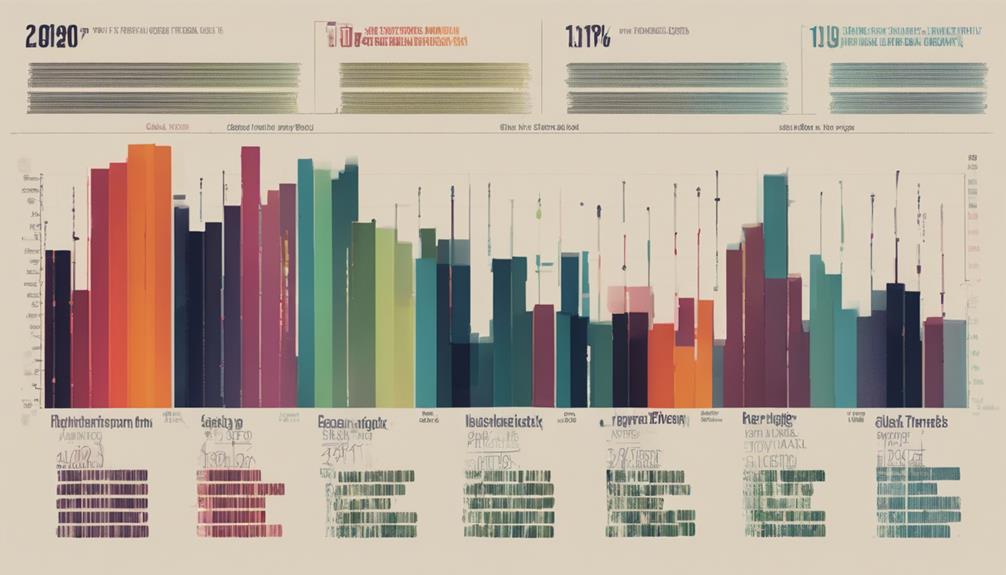
As cybersecurity threats continue to escalate, various statistics shed light on the alarming realities of the digital landscape. Generative AI poses both a solution and a challenge in the fight against cybercrime. While AI tools can enhance cyber resilience, they are also leveraged by malicious actors to amplify their attacks. Social engineering remains a prevalent tactic, with phishing accounting for almost 40% of email threats. Cybersecurity AI stats indicate that internal actors play a significant role in detected cyber incidents, emphasizing the importance of insider threat detection measures. The industry faces increased stress levels as cyber security professionals grapple with the rising tide of attacks. Staying informed about these miscellaneous cybersecurity stats is essential for organizations looking to bolster their defenses in an increasingly hostile online environment.
| Category | Statistic |
|---|---|
| Worldwide cybercrime costs | $10.5 trillion annually by 2025 |
| Increase in cyberattacks | 75% of security professionals noted an uptick in the past year |
| Ransomware costs | Projected to reach $265 billion USD annually by 2031 |
| Phishing prevalence | Accounts for 39.6% of email threats, with 94% of malware via email |
Frequently Asked Questions
Were 2365 Cyberattacks in 2023 With 343338964 Victims?
In 2023, there were 2365 reported cyberattacks, impacting 343,338,964 victims globally. The significant number of attacks and victims underscores the pervasive threat of cybercrime, emphasizing the critical need for robust cybersecurity measures to safeguard individuals and organizations.
What Are the Statistics Related to Cyber Attacks?
The statistics related to cyber attacks are alarming, with a projected $10.5 trillion in global cybercrime costs by 2025. Security professionals report a 75% increase in cyberattacks, with ransomware costs expected to reach $265 billion annually by 2031.
How Can AI Be Used for Cybersecurity?
AI is a powerful tool in cybersecurity, capable of mimicking human behaviors, enhancing threat detection, and speeding up incident response. Its application improves defense mechanisms, addresses skills shortages, and helps organizations stay ahead of cyber threats.
What Are the Vulnerability Statistics for Cybersecurity?
Cybersecurity vulnerabilities persist in the face of evolving threats. The integration of generative AI raises concerns, with 46% of professionals citing increased vulnerability. Privacy issues (39%) and undetectable phishing attacks (37%) top the list of worries.
Conclusion
To sum up, the evolving landscape of cybersecurity is full of challenges, but with the right knowledge and tools, organizations can stay ahead of the game.
By remaining vigilant against threats such as ransomware and phishing attacks, investing in AI-driven security solutions, and ensuring compliance with regulations like GDPR, businesses can protect themselves from potential breaches.
Remember, prevention is key in the world of cybersecurity.
